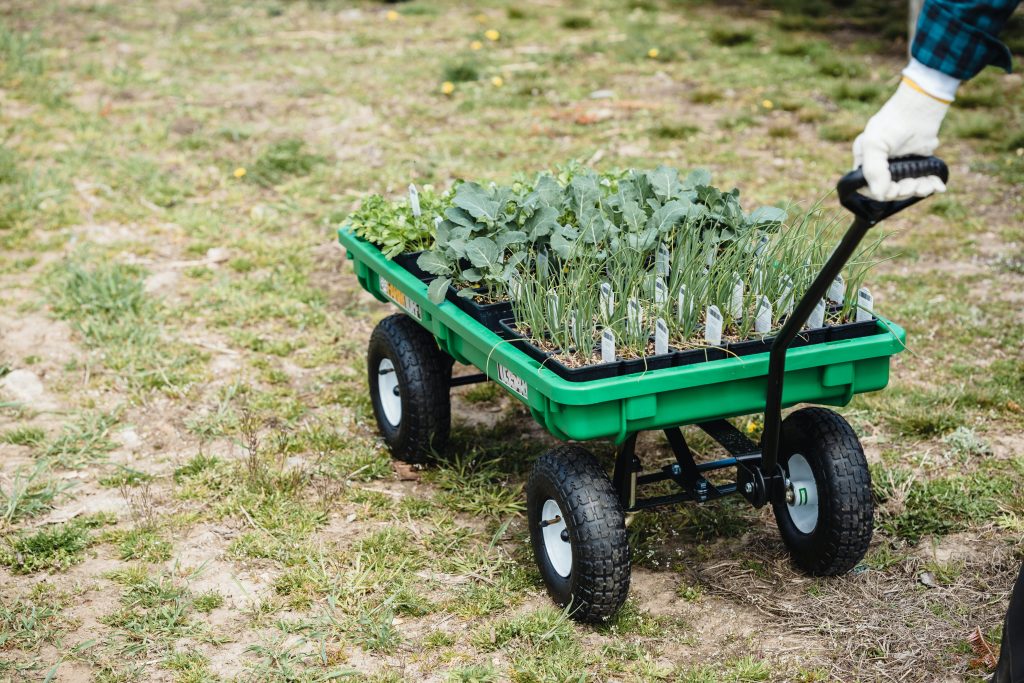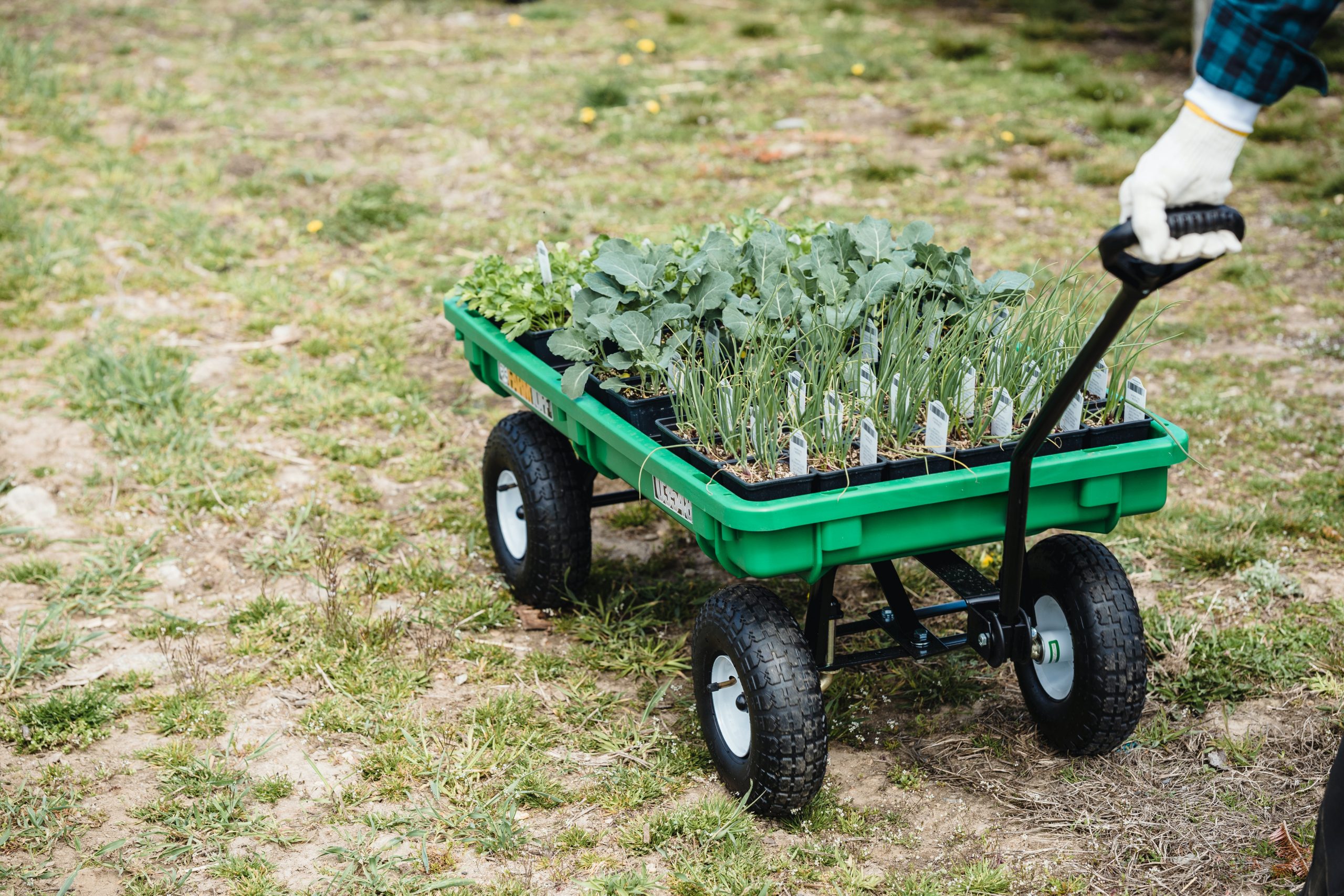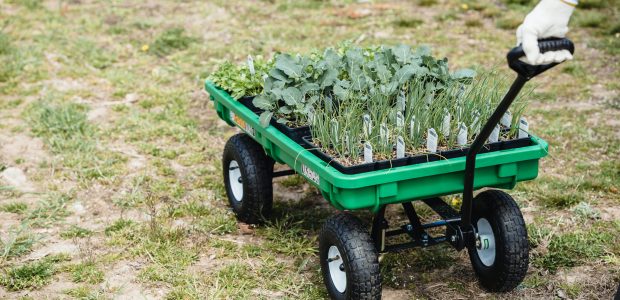
Permaculture is a holistic approach to farming that emphasizes sustainable and regenerative practices. By mimicking natural ecosystems, permaculture farmers aim to create self-sustaining, diverse, and resilient food systems that minimize environmental impact. In this blog post, we’ll explore how permaculture principles can be applied to food production, including techniques for vegetable gardening, fruit tree maintenance, and raising livestock. We’ll also discuss the benefits of organic farming, natural farming, and how to grow your own food using permaculture techniques.
How to Grow Your Own Food Using Permaculture Principles: Permaculture principles emphasize the importance of designing your food system to work with nature, rather than against it. By observing and mimicking natural patterns, permaculture farmers can create food systems that require less input while producing more yield. Here are some techniques for growing your own food using permaculture principles:
Companion Planting: Companion planting is a permaculture technique that involves planting different crops together in a way that benefits both plants. For example, planting nitrogen-fixing plants like beans alongside crops like tomatoes can help improve soil fertility and yield. Companion planting also helps to control pests and diseases, as certain plants can repel or attract certain insects.
Crop Rotation: Crop rotation is another permaculture technique that involves rotating crops between different areas of your garden. This helps to prevent soil depletion and pest buildup, as different crops require different nutrients and attract different pests. By rotating your crops, you can also improve soil fertility and reduce the need for fertilizers.
Polyculture: Polyculture involves planting multiple crops in the same area, rather than monoculture (planting only one crop). This helps to create a diverse and resilient food system that can better withstand pests, diseases, and weather fluctuations. Polyculture can also improve soil fertility, as different crops have different root depths and nutrient needs.
Techniques for Vegetable Gardening: Vegetable gardening is a great way to grow your own food and improve your health. Here are some permaculture techniques for vegetable gardening:
Raised Beds: Raised beds are an effective way to grow vegetables in a small space. By creating a raised bed, you can improve soil drainage, increase soil temperature, and reduce soil compaction. Raised beds also make it easier to control pests and weeds, and can be built using recycled materials.
Composting: Composting is a natural way to improve soil fertility and reduce waste. By composting your kitchen scraps and yard waste, you can create a nutrient-rich soil amendment that can be used to fertilize your vegetable garden. Composting also helps to reduce greenhouse gas emissions by diverting organic waste from landfills.
Rainwater Harvesting: Rainwater harvesting is a permaculture technique that involves collecting and storing rainwater for later use. By installing a rainwater harvesting system, you can reduce your water bills and conserve water. Rainwater can be used to irrigate your vegetable garden, and can also be used for household purposes like flushing toilets and washing clothes.
Techniques for Fruit Tree Maintenance: Fruit trees are a valuable addition to any permaculture food system. Here are some techniques for maintaining healthy fruit trees:
Pruning: Pruning is an essential part of fruit tree maintenance, as it helps to improve fruit quality and tree health. By removing dead or diseased branches, you can prevent the spread of pests and diseases, and improve air circulation and sunlight penetration. Pruning also helps to maintain the shape and size of your tree, making it easier to harvest fruit.
Mulching: Mulching is a permaculture technique that involves covering the soil around your fruit tree with organic material like leaves, straw, or wood chips. Mul
ch helps to retain soil moisture, suppress weeds, and improve soil fertility. Mulch also provides a habitat for beneficial organisms like earthworms and beneficial microbes.
Fruit Tree Guilds: Fruit tree guilds are a permaculture technique that involves planting complementary plants around your fruit tree. Companion plants like nitrogen-fixing plants, herbs, and flowers can help to improve soil fertility, attract beneficial insects, and deter pests. Fruit tree guilds also create a diverse and resilient food system that can better withstand environmental stressors.
Techniques for Raising Livestock: Raising livestock is an important component of many permaculture food systems. Here are some techniques for raising livestock in a sustainable and ethical way:
Rotational Grazing: Rotational grazing is a permaculture technique that involves moving livestock between different areas of your pasture. By rotating your livestock, you can prevent overgrazing and soil erosion, while improving soil fertility and pasture health. Rotational grazing also helps to mimic natural grazing patterns, which can improve animal health and reduce the need for veterinary interventions.
Intensive Grazing: Intensive grazing is a permaculture technique that involves confining your livestock to a small area for a short period of time. This helps to concentrate animal impact and nutrients, which can improve soil fertility and pasture health. Intensive grazing also allows for better control of grazing patterns, and can be used to target specific areas of your pasture for improvement.
Natural Feeding: Natural feeding is a permaculture technique that involves feeding your livestock a natural diet that mimics their natural diet in the wild. This can include grasses, legumes, and other plants that are appropriate for your livestock’s digestive system. Natural feeding can improve animal health and reduce the need for expensive feed supplements.
Permaculture principles offer a sustainable and regenerative approach to food production. By applying permaculture techniques like companion planting, crop rotation, and natural farming, you can create a diverse and resilient food system that benefits both the environment and your health. Whether you’re growing your own vegetables, maintaining fruit trees, or raising livestock, permaculture offers a range of techniques that can help you achieve your goals. By adopting permaculture principles, we can create a more sustainable and resilient food system for generations to come.


